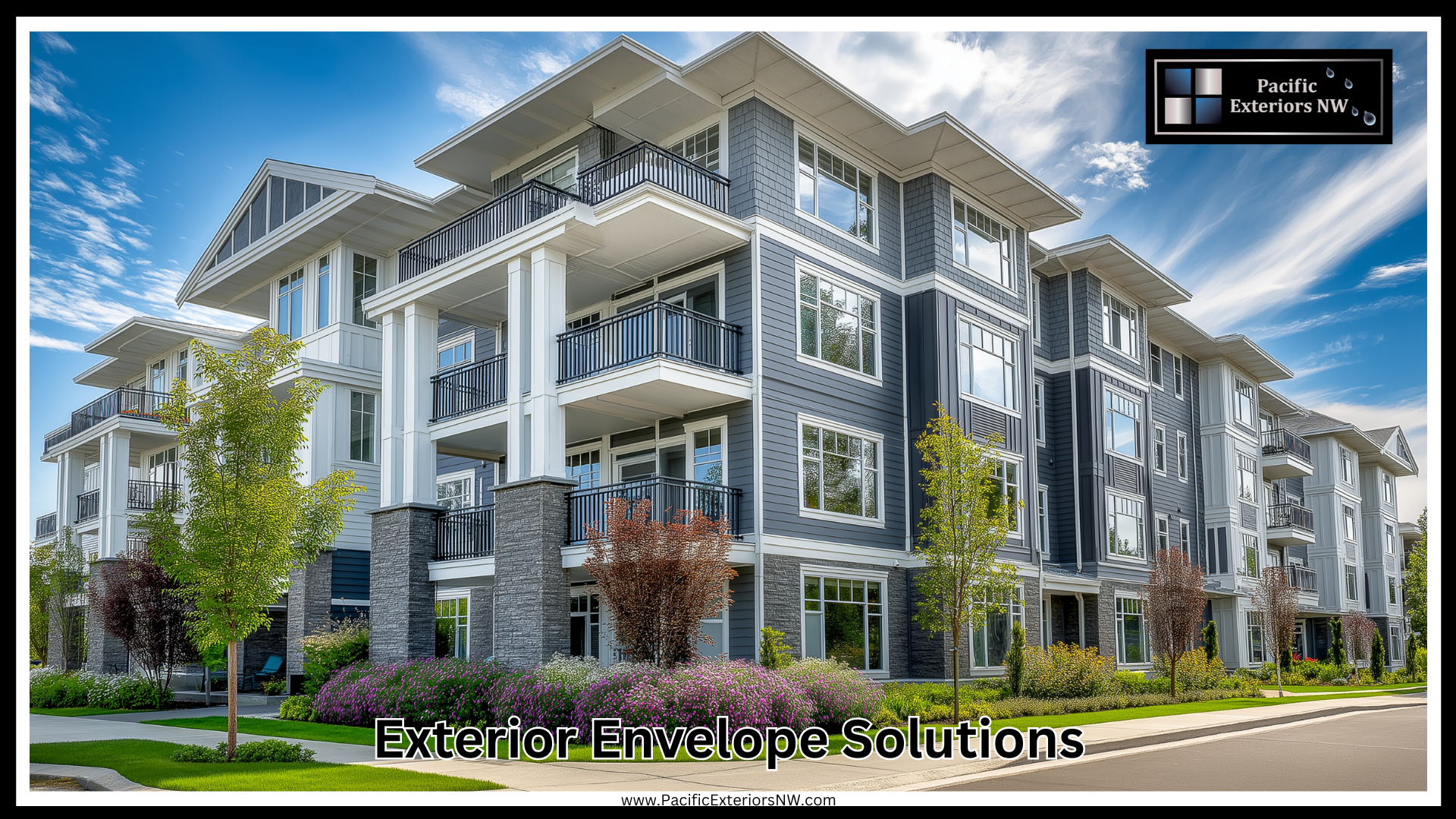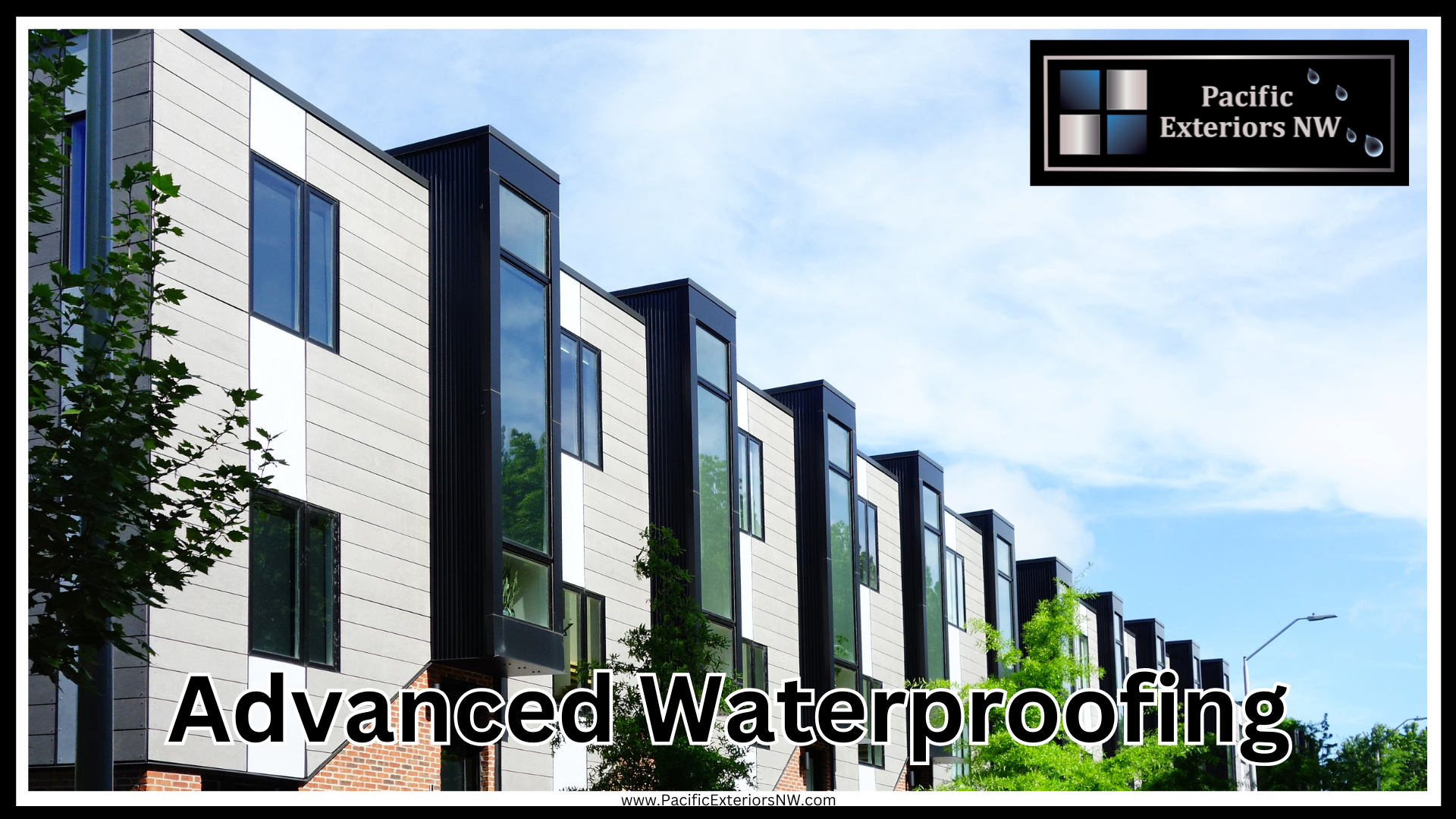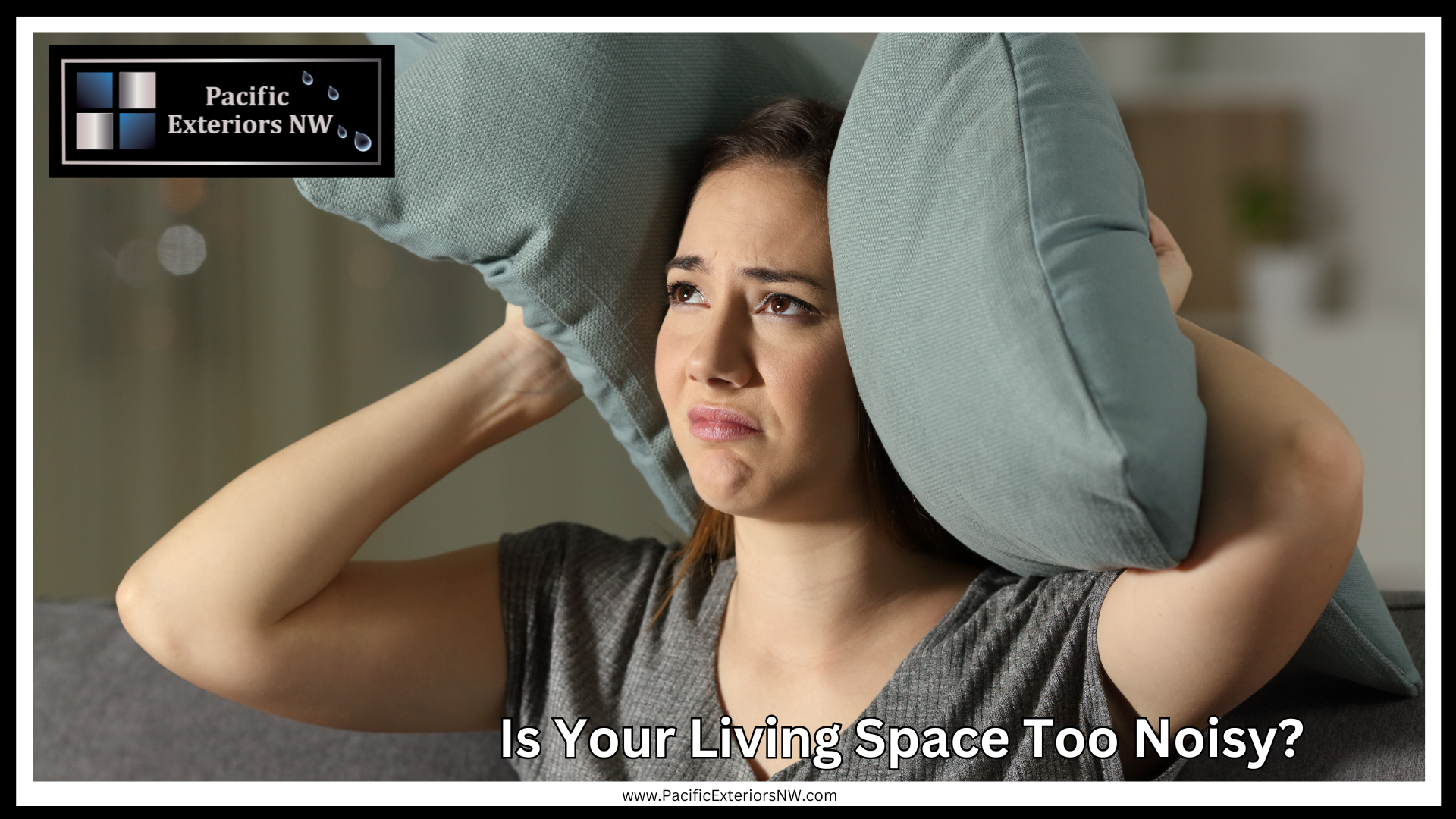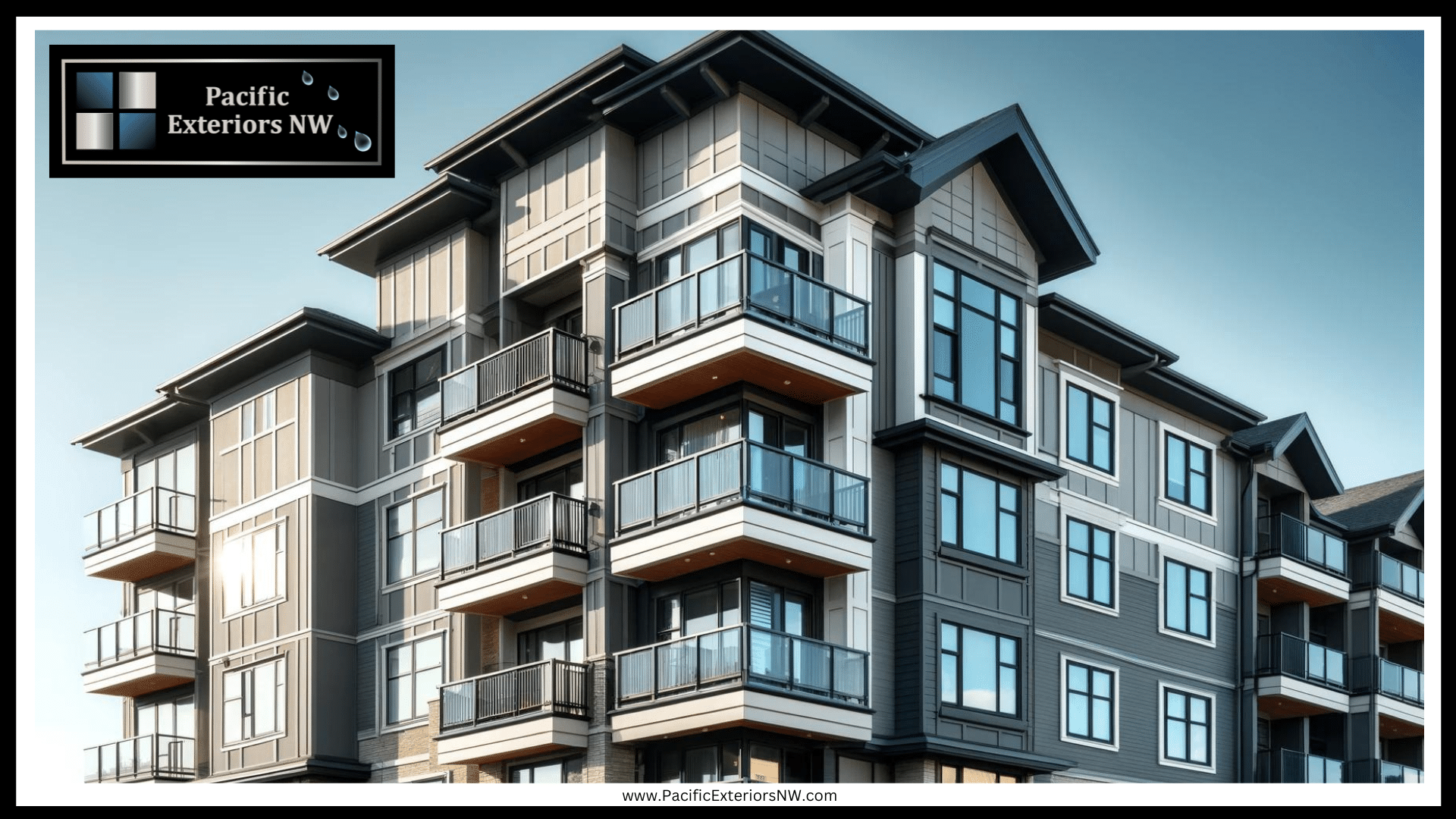
Choosing the right siding for multi-family homes is pivotal. Not only does it impact curb appeal, but it also affects maintenance and longevity. Pacific Exteriors NW knows the importance of making informed decisions about siding materials. This guide will explore various siding options, providing insights to master modern siding for your properties.
Fiber Cement Siding
Fiber cement siding is an innovative material that combines cement, sand, and cellulose fibers to create a highly durable and versatile exterior solution. Known for its impressive resilience and aesthetic flexibility, fiber cement siding has become a popular choice for multi-family homes, offering a blend of practicality and beauty. Here is the Pacific Northwest, James Hardie is the brand to use.
Advantages
Fire-Resistant
Fiber cement siding is non-combustible and provides excellent fire resistance. This is particularly beneficial for multi-family homes, where safety is a top priority.
Longevity
With proper maintenance, fiber cement siding can last up to 50 years. This longevity makes it a cost-effective investment.
Aesthetic Flexibility
Available in a wide range of textures, colors, and styles, fiber cement siding can mimic the appearance of wood, stucco, or masonry. This versatility allows for various design possibilities to match different architectural styles.
Durability
Fiber cement siding is highly resistant to common issues such as rot, insects, and harsh weather conditions. This durability ensures the siding remains intact and visually appealing for many years.
Disadvantages
Installation Costs
Due to its weight and the expertise required for proper installation, fiber cement siding tends to be more expensive to install than other materials. Professional installation is recommended to ensure it is fitted correctly and securely.
Maintenance
While fiber cement siding is low maintenance compared to wood, it requires periodic upkeep. Repainting every 10-15 years is necessary to maintain its appearance and protect it from the elements.
Practical Applications
Fiber cement siding is ideal for various multi-family housing scenarios. Let’s delve into a few practical examples:
Pacific Exteriors NW Installation in Portland
A recent project by Pacific Exteriors NW involved a multi-family apartment complex in Portland. The building required a siding solution that combined modern aesthetics with enhanced safety features. Fiber cement siding was chosen for its fire-resistant properties and ability to mimic a contemporary wood finish. The installation produced a sleek, modern look that met the city’s stringent fire codes.
Sustainable Choice for an Eco-Friendly Community
In Vancouver, a multi-family housing community focused on sustainability opted for fiber cement siding due to its eco-friendly benefits. Made from natural materials, fiber cement siding does not release harmful toxins and is a more environmentally conscious choice compared to vinyl siding. Pacific Exteriors NW facilitated the installation, ensuring the project adhered to green building standards.
Detailed Comparison with Other Siding Materials
To better understand the benefits of fiber cement siding, let’s compare it to other common siding materials:
Fiber Cement vs. Vinyl Siding
- Durability: Fiber cement is more durable and longer-lasting than vinyl, which can crack and warp over time.
- Aesthetics: Fiber cement offers a more premium look and can convincingly replicate wood and other textures, while vinyl is often limited in its appearance.
- Maintenance: Vinyl requires less maintenance than fiber cement, which needs periodic repainting.
Fiber Cement vs. Wood Siding
- Durability: Unlike wood, fiber cement is resistant to pests and rot, making it a more durable option.
- Maintenance: Wood siding requires regular staining or painting and is prone to damage from insects and moisture, whereas fiber cement is relatively low maintenance.
- Cost: While both materials can be expensive, fiber cement typically has a lower long-term cost due to its longevity and lower maintenance needs.
Fiber Cement vs. Brick Veneer Siding
- Installation: Brick veneer is heavier and more labor-intensive than fiber cement.
- Cost: Fiber cement siding is generally less expensive than brick veneer.
- Aesthetics: Both offer high-end looks, but brick veneer provides a more classic, timeless appearance, while fiber cement offers versatility in design.
Maintenance Tips
Maintaining fiber cement siding involves a few key steps to ensure its longevity and appearance:
- Regular Cleaning: To remove dirt and debris, wash the siding with a garden hose or a low-pressure power washer at least once a year.
- Repainting: Repaint every 10-15 years to maintain the protective layer and fresh appearance. Use high-quality, exterior-grade paint for the best results.
- Inspection: Periodically inspect the siding for any cracks, chips, or signs of damage. Promptly address any issues to prevent further deterioration.
Engineered Wood Siding
Engineered wood siding is a high-performance alternative to traditional wood siding. Crafted from wood fibers and resins, it offers the aesthetic appeal of natural wood with enhanced durability and resistance to the elements. Due to its balance of beauty, sustainability, and performance, engineered wood siding is becoming increasingly popular for multi-family homes.
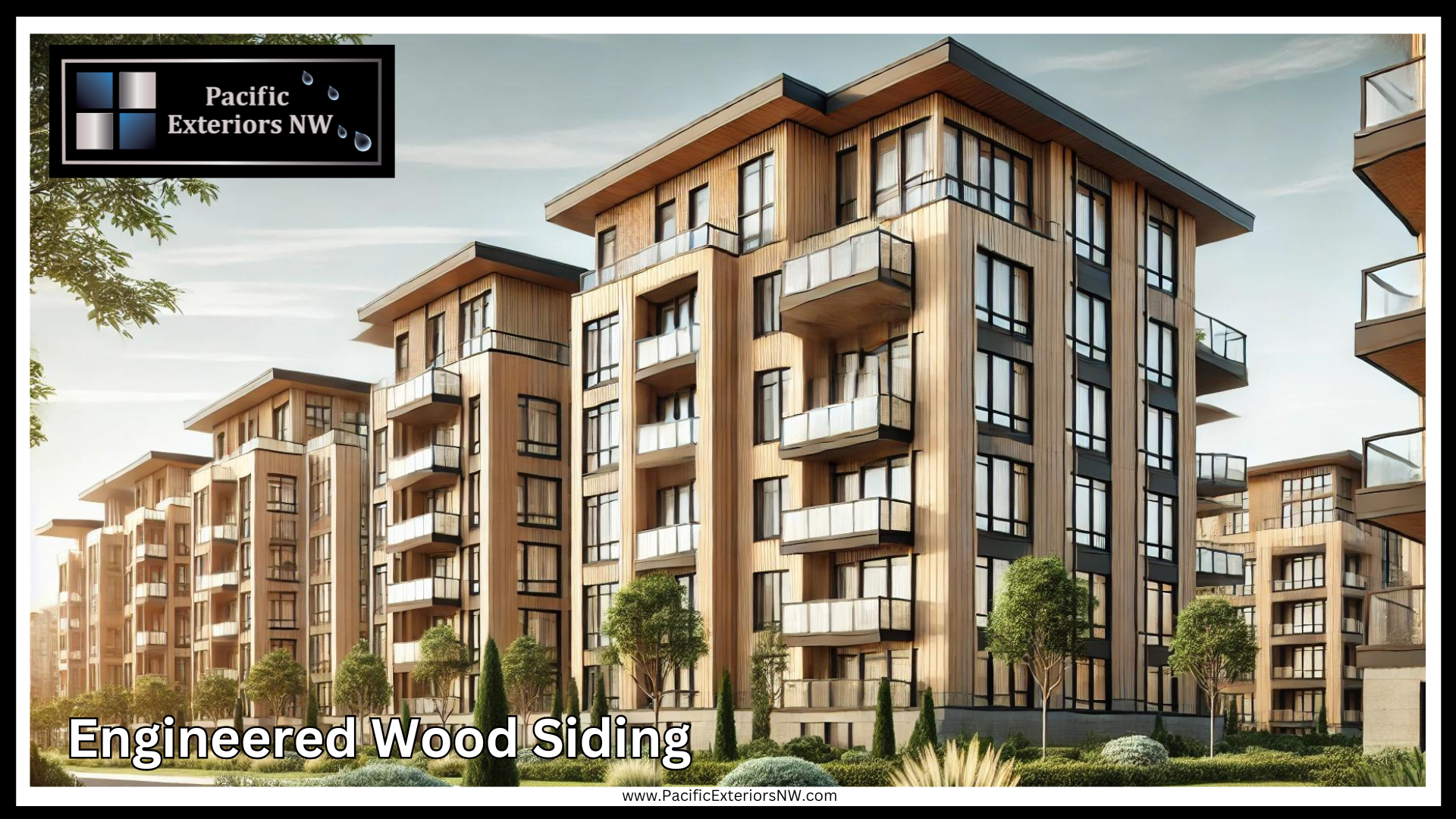
Advantages
Aesthetically Pleasing
Engineered wood siding closely mimics the look of real wood, complete with natural wood grain and textures. This makes it an attractive option for achieving a classic, timeless look.
Durability
Engineered wood siding is designed to withstand the elements. It is treated to resist pests, rot, and moisture, making it more durable than traditional wood siding.
Eco-Friendly
This siding option is more environmentally friendly than traditional wood because it uses sustainable wood fibers and less waste. Many manufacturers use recycled wood fibers, further reducing environmental impact.
Cost-Effective
While more expensive than vinyl, engineered wood siding is generally less costly than natural wood. Its durability also means lower maintenance costs over time.
Ease of Installation
Engineered wood siding is lighter than natural wood and easier to cut and handle, simplifying installation. This can reduce labor costs and installation time.
Disadvantages
Color Fading
Over time, the color of engineered wood siding can fade, particularly if exposed to intense sunlight. This may necessitate periodic repainting or staining.
Susceptible to Moisture
While treated to resist moisture, engineered wood siding can still be susceptible to water damage if improperly installed or maintained. Ensuring proper sealing and installation is crucial.
Maintenance
Although engineered wood siding requires less maintenance than natural wood, it still needs periodic care. Regular inspections, repainting, and sealing are necessary to maintain its appearance and integrity.
Practical Applications
Engineered wood siding is suitable for various applications in multi-family homes. Here are a few practical examples:
Pacific Exteriors NW Installation in Beaverton
In Beaverton, a multi-family housing project aimed to achieve a rustic, natural look without the drawbacks of traditional wood siding. Pacific Exteriors NW recommended engineered wood siding, which provided the desired aesthetic while ensuring greater durability and lower maintenance. The result was a beautiful, wood-like appearance that withstood the local climate.
Sustainable Housing Development in Portland
A sustainable housing development in Portland chose engineered wood siding for its eco-friendly properties. By using materials with recycled content and sustainable manufacturing practices, the project aligned with green building standards. Pacific Exteriors NW managed the installation, highlighting their commitment to environmentally responsible construction.
Did you know…
Some engineered wood siding options are infused with zinc borate during manufacturing. This natural compound helps protect the siding from termites and fungal decay, enhancing its durability and making it an even more attractive option for long-term use.
Metal Siding
Metal siding, typically made from aluminum or steel, offers a modern, industrial look and excellent durability. It is increasingly popular for multi-family homes due to its low maintenance requirements and contemporary appeal. Metal siding comes in various styles and finishes, providing versatility to match various architectural designs.
Advantages
Durability
Metal siding is exceptionally durable and can withstand harsh weather conditions, including heavy rain, snow, and high winds. It is resistant to fire, pests, and rot, making it an ideal choice for long-lasting exterior protection.
Low Maintenance
Metal siding requires minimal upkeep. Unlike wood, it does not need regular painting or sealing. Occasional cleaning with a hose or power washer is usually sufficient to keep it looking new.
Modern Appeal
Metal siding offers a sleek, contemporary aesthetic that can enhance the appearance of any building. It is available in various colors and finishes, including smooth, textured, and even wood-look options, providing flexibility in design.
Eco-Friendly
Many metal siding options are made from recycled materials and are recyclable at the end of their lifespan. This makes metal siding a sustainable choice for environmentally conscious projects.
Disadvantages
Cost
The initial cost of metal siding can be higher than other materials, such as vinyl or engineered wood. However, its durability and low maintenance can offset this over time.
Denting
Metal siding, particularly aluminum, can dent upon impact. While steel is more resistant, it is heavier and more challenging to work with.
Noise
Metal siding can amplify sounds, such as rain or hail, which may be a consideration for some homeowners. However, proper insulation can mitigate this issue.
Practical Applications
Metal siding is suitable for a variety of applications in multi-family homes. Here are a few practical examples:
Pacific Exteriors NW Installation in Vancouver
In Vancouver, a multi-family apartment complex needed a durable, low-maintenance siding solution that would stand out architecturally. Pacific Exteriors NW recommended steel siding with a sleek, matte finish. The result was a striking, modern facade that enhanced the building’s aesthetics and provided superior protection against the elements.
Urban Loft Development in The Pearl
An urban loft development in the Pearl district sought to create an industrial-chic look while maintaining sustainability. Metal siding was chosen for its contemporary appeal and eco-friendly properties. Pacific Exteriors NW managed the installation, using recycled metal panels to align with the project’s green building goals.
Did you know…
Metal siding can be coated with special reflective paints that reduce energy costs by reflecting solar heat. This not only helps keep buildings cooler in the summer but also reduces the need for air conditioning, making metal siding an energy-efficient choice for your property.
Brick Veneer Siding
Brick veneer siding offers traditional brick’s timeless and classic appearance at a fraction of the cost and weight. Unlike solid brick construction, brick veneer is a single layer of brick-like material installed over a structural wall. This approach provides a brick look with aesthetic and durability benefits without the associated expenses and labor intensity. Brick veneer is an excellent choice for multi-family homes, offering style and substance.
Advantages
Aesthetic Appeal
Brick veneer provides a classic, timeless look that can enhance the curb appeal of any building. It comes in various colors, textures, and sizes, allowing customization to match different architectural styles.
Durability
Brick veneer is highly durable and resistant to weather, fire, and pests. It does not rot, warp, or erode, making it a long-lasting siding option.
Low Maintenance
Once installed, brick veneer requires minimal maintenance. Occasional cleaning to remove dirt and debris is usually sufficient to keep it looking its best.
Energy Efficiency
Brick veneer adds an additional layer of insulation to a building, helping to regulate indoor temperatures and potentially reducing energy costs.
Increased Property Value
The classic look of brick can enhance a property’s overall value, making it desirable to potential buyers or renters.
Disadvantages
Cost
While less expensive than solid brick construction, brick veneer is still more costly than some other siding options, such as vinyl or engineered wood. However, its durability can justify the higher initial investment over time.
Installation Complexity
Installing brick veneer requires skilled labor to ensure it is properly attached to the building structure and that water and moisture barriers are correctly installed.
Weight
Although lighter than solid brick, brick veneer is heavier than most other siding materials. This weight requires adequate structural support and can complicate the installation process.
Practical Applications
Brick veneer siding is suitable for various applications in multi-family homes. Here are a few practical examples:
Pacific Exteriors NW Installation in Forest Grove
Forest Grove’s condominium complex sought to enhance its exterior with a timeless and durable solution. Pacific Exteriors NW recommended brick veneer siding to achieve a sophisticated look while ensuring longevity and minimal maintenance. The installation resulted in a classic, upscale appearance that appealed to residents and increased property value.
Did you know…
Brick veneer can be used to create stunning interior accent walls. This adds a rustic, industrial charm to interior spaces and provides a unique design element that can make your property stand out.
Stone Veneer Siding
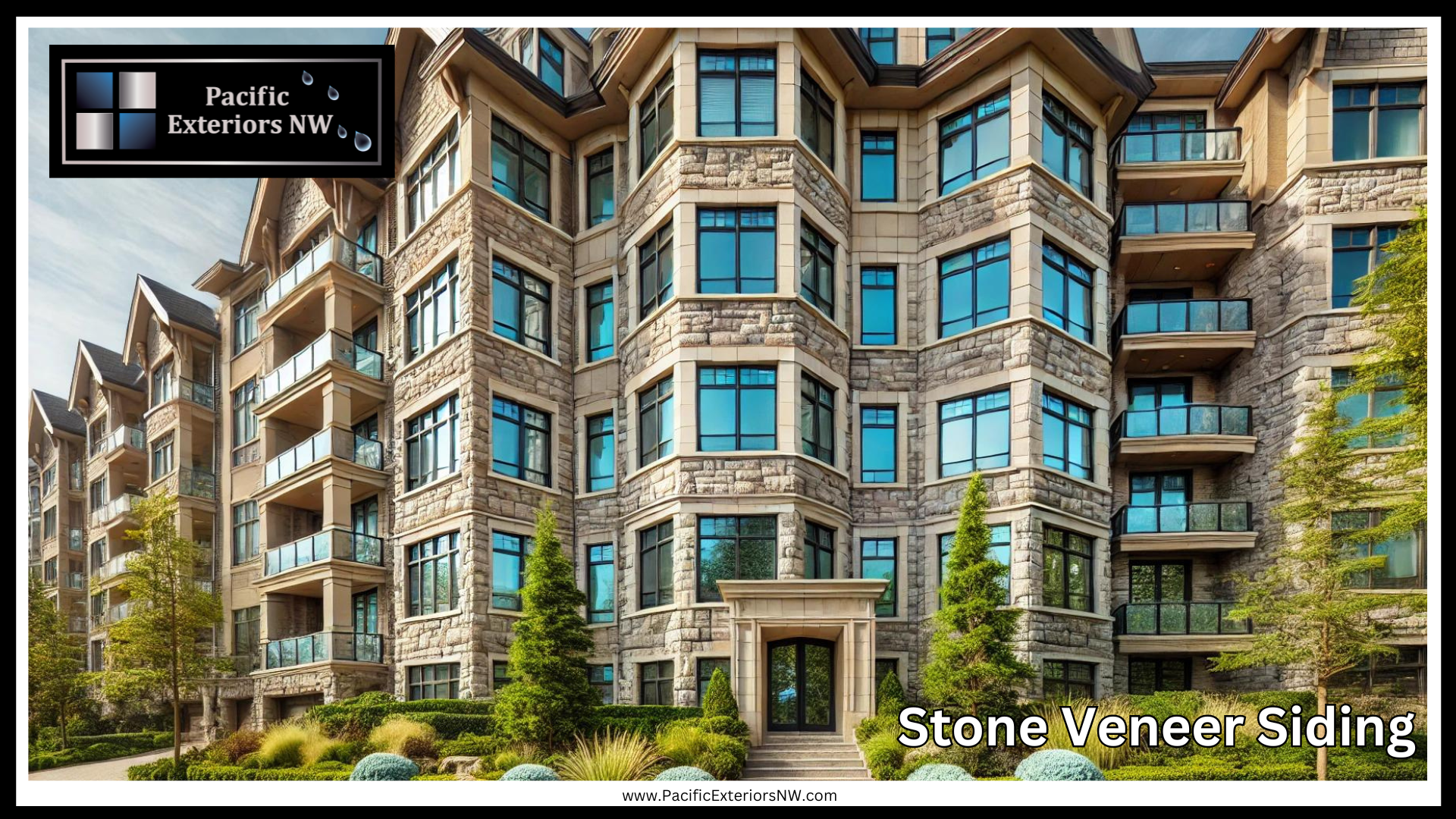
Stone veneer siding offers natural stone’s luxurious and timeless look without the heavy weight and high cost. Made from a mixture of natural stone and lightweight aggregates, stone veneer is a versatile and attractive option for enhancing the exterior of multi-family homes. It provides the beauty and durability of real stone, making it a popular choice for homeowners and builders alike.
Advantages
Aesthetic Appeal
Stone veneer provides an upscale, natural look that can dramatically enhance the curb appeal of any property. It comes in various colors, textures, and styles, allowing customization to match different architectural designs.
Durability
Stone veneer is highly durable and resistant to weather, fire, and pests. It does not rot, warp, or erode, making it a long-lasting siding option.
Lightweight
Stone veneer is significantly lighter than natural stone, which makes it easier to handle and install. This reduces the structural load on buildings and simplifies the installation process.
Cost-Effective
While stone veneer is more expensive than materials like vinyl or engineered wood, it is much more affordable than natural stone. Its long lifespan and low maintenance requirements also contribute to cost savings over time.
Disadvantages
Cost
Although less expensive than natural stone, stone veneer still has a higher initial cost than other siding materials like vinyl or wood. However, its aesthetic appeal and durability can justify the investment.
Installation Complexity
Installing stone veneer requires skilled labor to ensure it is properly attached to the building structure and that water and moisture barriers are correctly installed.
Maintenance
While generally low maintenance, stone veneer can require occasional cleaning and inspection to maintain its appearance and structural integrity.
Practical Applications
Stone veneer siding is suitable for various applications in multi-family homes. Here are a few practical examples:
Pacific Exteriors NW Installation in Portland
A luxury apartment building in Portland sought to elevate its exterior with a high-end, natural look. Pacific Exteriors NW recommended stone veneer siding to achieve this aesthetic without natural stone’s high cost and weight. The result was a sophisticated facade that enhanced the building’s curb appeal and market value.
Modern Townhomes in Vancouver
A modern townhome development in Vancouver wanted to incorporate natural elements. The stone veneer was chosen for its ability to blend with contemporary architecture while providing a touch of rustic charm. Pacific Exteriors NW managed the installation, ensuring the stone veneer was seamlessly integrated with the overall design.
Did you know…
Stone veneer can also be used for stunning interior features. It’s perfect for accent walls, fireplaces, and kitchen backsplashes, adding a touch of luxury and elegance to your interior spaces. This versatile material can transform any room, giving it a unique and high-end feel.
Summary
Choosing the right siding for multi-family homes involves balancing aesthetics, durability, and cost. Pacific Exteriors NW offers a range of siding options to meet diverse needs.
FAQ
Q: What is the most durable siding material?
A: Fiber cement siding is highly durable, lasting up to 50 years with proper maintenance.
Q: Which siding is best for a modern look?
A: Metal siding offers a sleek, contemporary aesthetic ideal for modern facades.
Q: Is vinyl siding environmentally friendly?
A: Due to its PVC content, vinyl siding is not the most eco-friendly option.
Q: Can I install the siding myself?
A: While some siding types, like vinyl, can be installed DIY, others, like fiber cement and stone veneer, require professional installation.
Pacific Exteriors NW is committed to helping you find the best siding solutions for your multi-family homes, ensuring a perfect blend of beauty, durability, and value.




